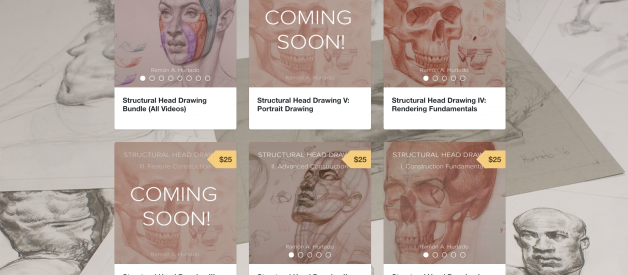A look at some wonderful available resources on the web for those trying to learn figure drawing without access to classroom instruction?
I feel compelled to start this post by mentioning that I have not attended an Atelier myself, but would have to think that learning to draw effectively by this sort of immersion is likely the most efficient way if you have the time and budget to do so. I?m a husband and father with a full time job and life balance to consider, so I?ve had to find my own way (e.g. drawing at lunch, or just before work, or during breaks). If you can relate, read on?
Basics
The first things you?ll likely want to learn are the preliminary basics like, ?What paper and pencils should I use for figure drawing??, and, ?How do I hold my pencil??, or, ?How do I get that crazy long pencil point I see??. There are a few resources, but I find the Line Control tutorial by Kirk Shinmoto?who teaches drawing at the Art Center College of Design in Pasadena as well as the Concept Design Academy?to be absolutely amazing. He covers materials, how to sharpen your pencil, and various exercises to help you learn how to use the overhand grip effectively.
Here?s an example of Kirk?s abilities as a draughtsman (absolutely no affiliate or kick backs here. But, as he and the others in this article have put out some amazingly useful and free content, I feel compelled to feature and link to some of the paid work available as well!)
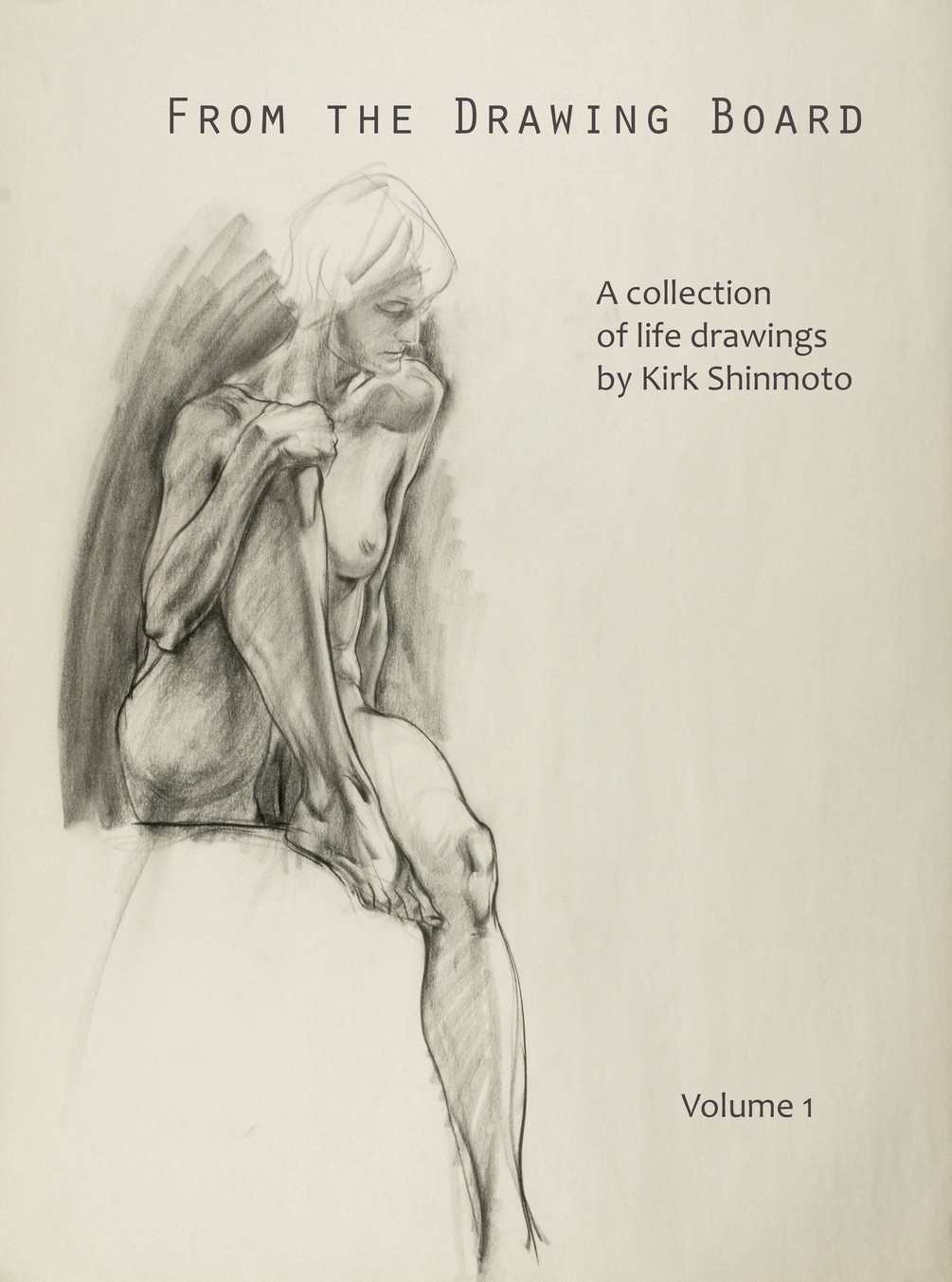 The cover of Kirk Shinmoto?s book of life drawings
The cover of Kirk Shinmoto?s book of life drawings
If you stalk his video tutorials, you?ll find many additional video resources worth having a look at.
Ramon Hurtado recently put together an amazing paid resource?Structural Head Drawing?that goes very deep into core drawing skills you?ll need like: materials, how to hold a pencil, exercises for line control, and even some amazing techniques to transform simple lines and shapes in to sophisticated forms. Although this series is on drawing heads, all the techniques will be extremely useful for drawing the figure as well. Ramon has studied with living masters such as Will Weston, Glenn Vilppu, Adrian Gottlieb, and Robert Liberace, and is both an amazing draughtsman and teacher that breaks complex ideas down in to layman terms for us mortals.
 Ramon Hurtado?s brand new series on Structural Head Drawing
Ramon Hurtado?s brand new series on Structural Head Drawing
Update: Since originally writing this article, another resource has been generously shared by NMA on Making Marks (with exercises) with Iliya Mirochnik available to watch for free.
The Process
Looking at the various popular approaches to tackling figure drawing, it seems they almost always have some form of gesture, construction, anatomy, tone. I suppose you could use the mnemonic GCAT to remember this. But, there are some interesting differences and overlaps I?ve noticed:
- Some use gesture to purely define the flowing line(s) of action that are felt when looking at the broad story and action of the model or reference. Others will give equal importance to establishing correct proportions in that gesture pausing to check with plum lines or other forms of relative measurement. Also, some prefer to start with straighter enveloping lines (similar to the Bargue Method), while others go right in to flowing S curves. It probably depends on your confidence level, and how difficult the pose is. Go with whatever you?re finding the most success with, but both approaches are totally valid.
- Some call what I?ve called construction: form building, structure, bracketing (as in using wrapping lines to start to show the 3d nature of the form), containing, volumetrics, etc. But the core idea is the same.
But it?s really most useful to go to the upcoming links I?ll now provide, and I disclaimer my above overview of the idea of a process, with the fact that I don?t teach the subject myself. Here are great resources from known experts?
 An example of the rhythmic energy of a Glenn Vilppu?s drawing
An example of the rhythmic energy of a Glenn Vilppu?s drawing
Glenn Vilppu?s book, The Vilppu Drawing Manual Book is a great overview of how to draw gesture, construct forms, and has nice exercises for mastering and using basic shapes in figure drawing. It also contains some good initial points on anatomy, although I personally found that area of the book to be harder to follow then the first on the earlier stages of the figure drawing process. I literally practiced drawing boxes, spheres, gestures, etc., referencing his book and comparing my results. I particularly find his gestures beautiful.
In addition to his book, I find it quite helpful to watch him draw in real time, and you can find many real time demo videos online such as the ones generously made available by New Masters: Timed Model Drawing Session 1 // Instructor: Glenn Vilppu. I believe this is the first of a series of 5. Also, he did a gorgeous live drawing demo for Proko (whom I?ll refer to later in this post) as well.
If you do have the time and budget, you might also consider the resources he makes available at Vilppu Academy which features personal critiques (recorded) by Mr. Vilppu himself, live chat, a closed Facebook group, and much more.
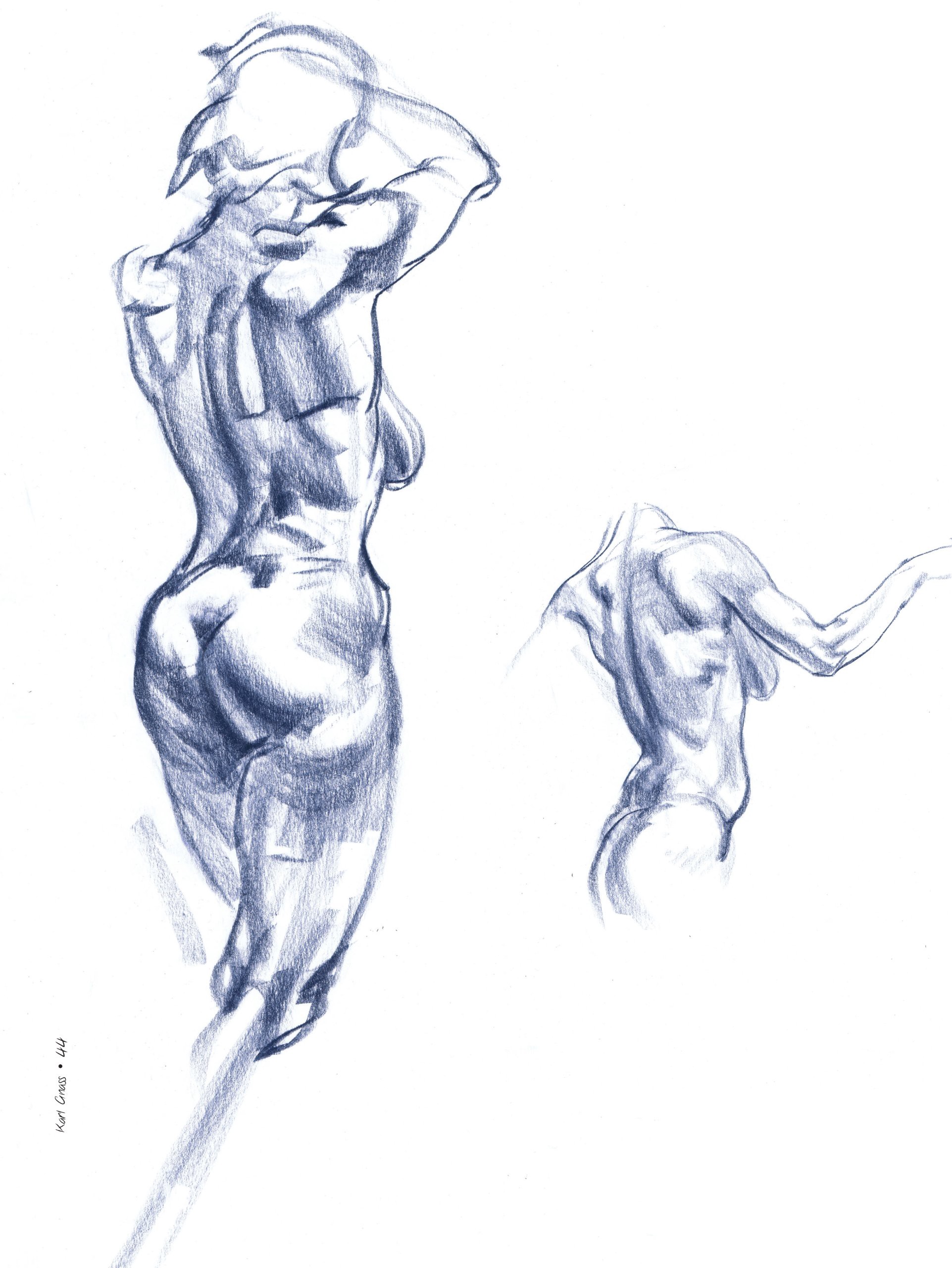 Sketch by Karl Gnass from Spirit And Force In Figure Drawing
Sketch by Karl Gnass from Spirit And Force In Figure Drawing
Karl Gnass has a series on figure drawing on YouTube that is a very nice introduction to his methods and shows a process used by a master. You?ll find some overlap with the first tutorial I mentioned.
- How to Sharpen a Pencil For Drawing (Part 1)
- How To Draw With A Pencil (Part 2)
- How to Draw The Figure With Line and Tone (Part 3)
- How to Draw Form with Light and Tone ( Part 4)
If you happen to want to go the paid route, you can find a very comprehensive course he has on New Master?s Academy. I?m not a member, but I watched most of his course during a 2 week trial and it had hours and hours of training and demo materials. I love both how he draws and teaches. That said, I find manyof the free resources I?ve dug up have a lot of overlap with his and Glenn Vilppu?s teachings, and in fact have either studied with one of these two masters, or a contemporary of theirs.
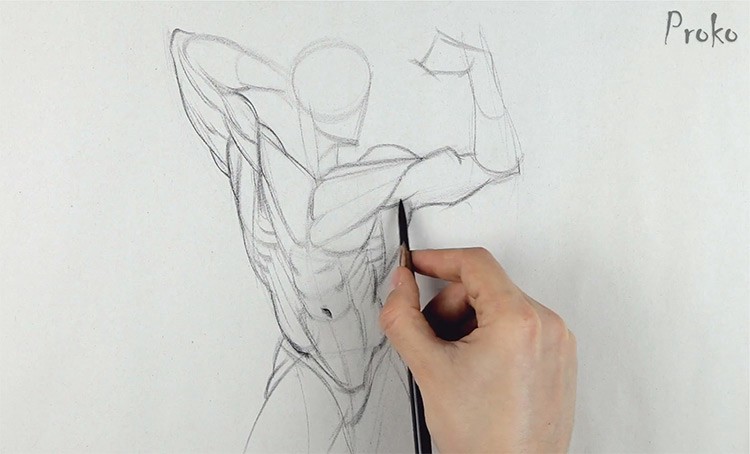 Stan Prokopenko?artist and teacher that produces art instruction videos on well-known site proko.com
Stan Prokopenko?artist and teacher that produces art instruction videos on well-known site proko.com
Figure Drawing ? How to Draw People is a nice sequenced playlist on the Proko channel. I find his videos really entertaining and extremely well researched, although I often wished to see him drawing in real time more often. Put differently, I loved going to one of his anatomy videos after having read about it just to get a different take on the topic. But, he recently put out a video on, ahem, How to Draw Butts From Any Angle where he?s drawing and talking in real time throughout the video. In a way, this lesson was much less polished then his usual videos, but, I personally found it much, much, more useful to see him actually drawing in real time. I?m keeping my fingers crossed he?ll continue to adopt this style of lesson going forward.
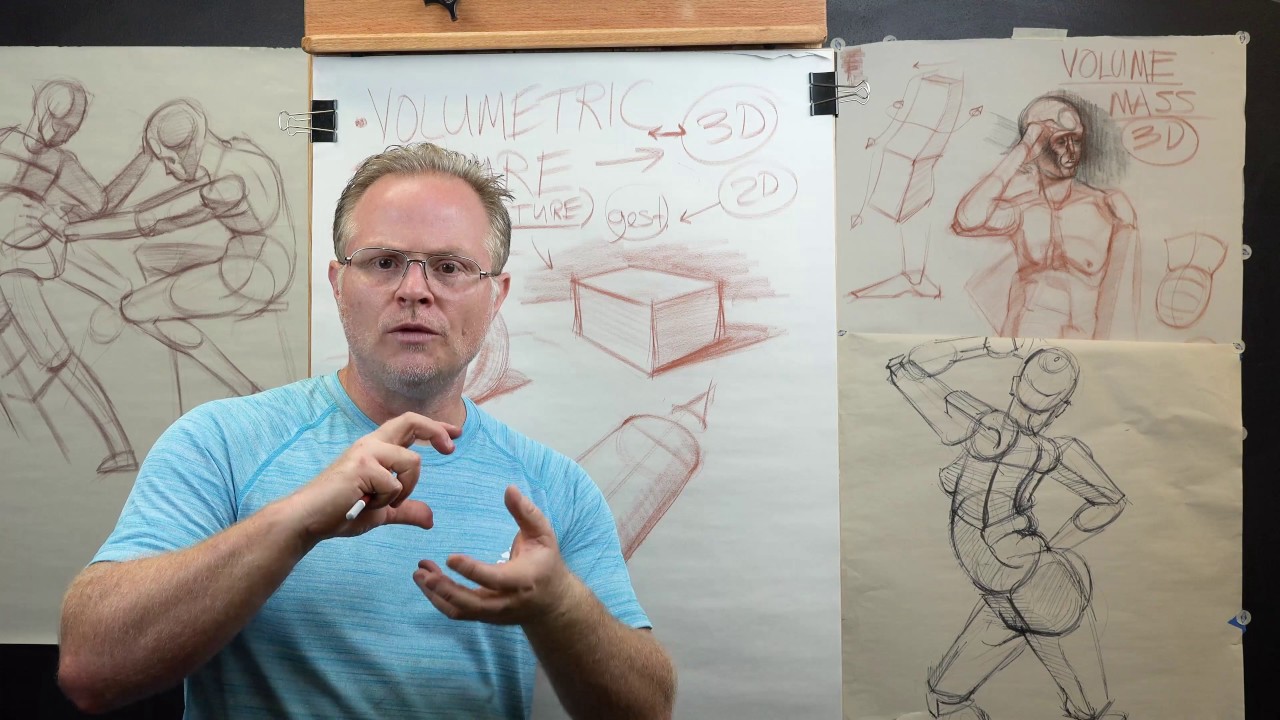 Marc Leone?s real time drawing lessons are chock full of value and clearly presented with nothing left unclear
Marc Leone?s real time drawing lessons are chock full of value and clearly presented with nothing left unclear
Marc Leone?s The Drawing Database channel has a Figure Drawing playlist with hours of content, amazingly free of charge:
The DDB is a public service outreach program, FREE to the public anytime-there is no fee! This channel is for Northern Kentucky University as well as alumni/alumnae and can be used by interested other students internationally. The videos are ?active learning?, meaning that the student can get the most out of the college level lessons by drawing with them.
The Jeff Watts Atelier has some amazing content on their channel (as well as paid online learning resources if you have the budget and time). Pertinent to learning this figure drawing process we?ve been talking about, I found it extremely useful to see Erik Gist?a teacher at the atelier?doing Figure Shortsketch as they have a different approach to the earlier mentioned teachers, with a lot of Reilly rhythms and abstractions coupled with certain approaches that seem to be entirely unique to their school.
Resources
Proportions & Measuring
As I mentioned earlier, the initial gesture drawing needs to maintain some semblance of proportion. Doing this for a beginner is very tricky as you?re trying to keep a sort of etherial fluidity to your lines (which feels like it requires a looser, freer spirit to the approach), while still maintaining accuracy (a generally more cerebral if not anal retentive activity). From hours of scouring any figure drawing video demos I could find, I?ve come to the conclusion that advanced practitioners have learned to do a sort of abbreviated and intuitive comparative measuring quickly and effortlessly so as to not take them out of the flow. Obviously, they also have a lot of mileage, and so their proportions are also instinctively accurate. But still they constantly correct and adjust with no shame. With all this nondescript talk of intuitive measuring, I can at least provide a link to a very short but informative video on measuring techniques by the awesome drawing instructor and practitioner Ron Lemen (you may also like this 1 minute clip which compliments Kirk Shinmoto?s line control lesson from earlier in the article. It shows how to practice what he calls the 4 lines).
Circles Ftw!
Related to the very first video I linked on line control, here?s a nice article by Ron Lemen on how to practice drawing circles and ellipses shapes. These have always been the bane of my draughtsmanship existence!
Inspiration
A lot of whether one can be successful with drawing, in general, depends on one?s stick-to-itiveness, and learning to really just enjoy the process of gradual learning. I find this quote by Steve Huston from his book Figure Drawing for Artists: Making Every Mark Count to be just what the doctor ordered:
Whatever your dream is, try this: Draw for five minutes a day. Draw a tube. Draw a figure. Draw the eye of a figure or whatever you can draw in five minutes. Do that for two weeks and only that. If you miss a day or two, forgive yourself and start again.When you?ve accomplished those, make it ten minutes a day. Do that for another week.The strange and wondrous thing about the human condition is each of us needs to motivate ourselves to become the person we really want to be. Motivate! It?s usually about forming good habits and building on countless little improvements: improvements in craft, in work habits, in cutting ourselves a break every once in a while.
Here?s an interview Proko did with Mr. Huston on Growing as an Artist which I also found quite inspirational.
There are a couple of instructors that post figure drawing process shots regularly on Instagram, and these images are a great supplement to your studies. Ramon Alexander Hurtado is an artist and teacher out of Los Angeles, and Will Weston is Professor of Entertainment Arts; ArtCenter, Pasadena, CA. Kevin Wueste is a Professor and Artist. Jacob Dhein is San Francisco area based artist and teaches drawing and painting at the Academy of Art University, San Francisco.
The podcasts: Gently Does It (John Dalton, also has a nice article featuring Living Masters), and The Studio both feature a lot of amazing contemporary figurative artists, and you should definitely consider hitting their sites to find some more amazing inspiration.
Timed Poses
CroquisCafe and New Masters Academy both have a huge database of amazing timed pose drawing resources for your daily drawing needs. Nothing beats a live life drawing session, but this about the next best thing if you?re drawing from the figure.
Honor Being Wrong
I?ve found many teachers and masters that, in one way or another, allude to the process of drawing or painting involving lots of push/pull, or constant adjusting and correcting, essentially an embracing of the fact that within the process of a drawing or painting, you?ll get some things off in your initial lay in or underdrawing, and that?s ok. Correcting and refining should be built in to the process. Figurative artist and teacher Sharon Sprung speaks to this beautifully in her conversation on the Suggested Donation podcast episode 26:
I teach them to honor being wrong, that the only way to be right is through comparison and contrast (with the live model) so they have to be wrong; and just get comfortable being wrong all the time?you can?t be right drawing, you can?t be right with the value, you can?t be right with the color?you have to be wrong first to see what?s right.
Practice
It?s not rocket science that it takes diligent practice to make satisfactory improvements, but what should we practice to improve figure drawing specifically? I?m going to cop out on answering that question, as it probably matters where you are on your own journey, but, here?s an interesting video from Proko Best Drawing Exercises ? Asking Pros. My take away was that, for drawing, gesture, line control, and comfort with shapes (with drawing them and also simplifying organic shapes in to spheres, boxes, ellipses, etc.) are the core things a beginner must master. So we never get stumped on what to practice, I suggest creating a little checklist for yourself. Here?s mine:
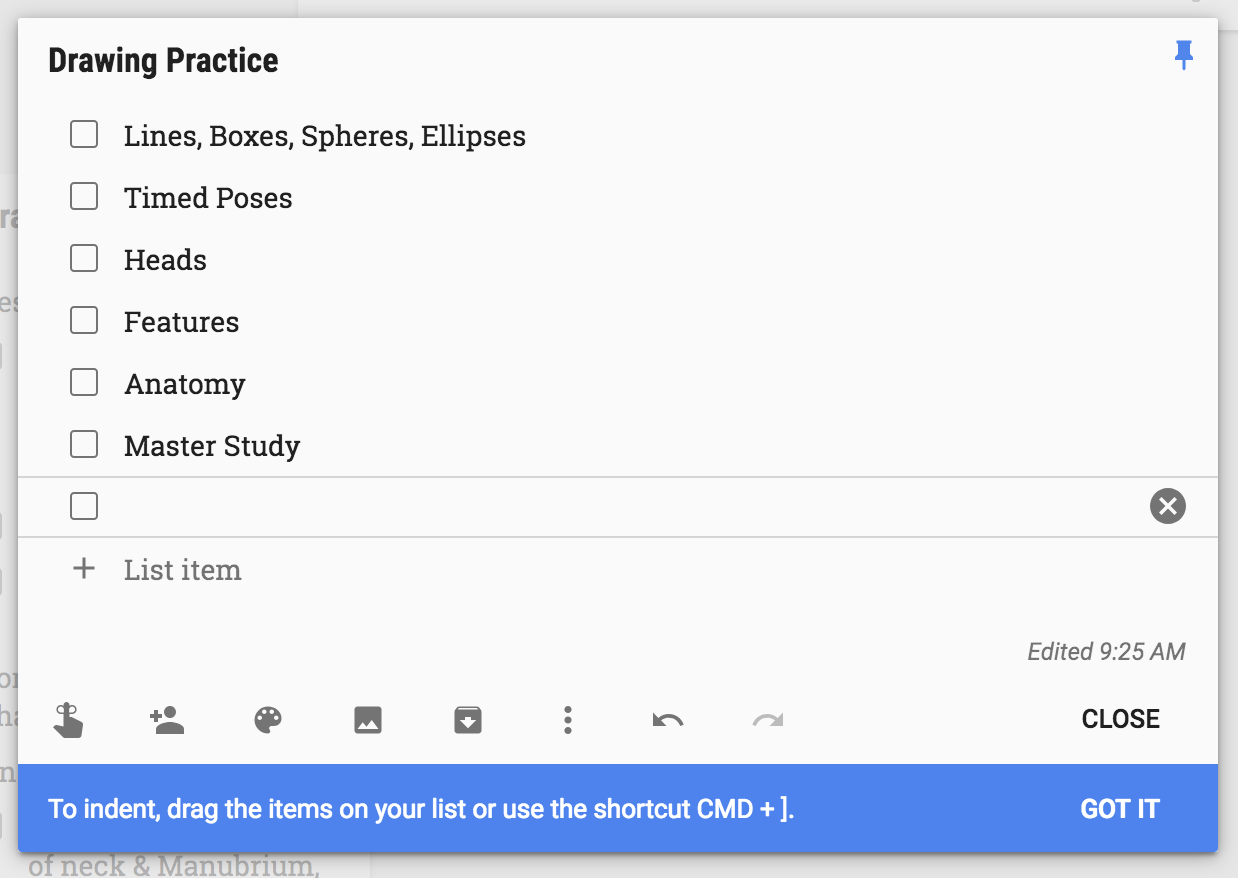
Obviously, it?s quite difficult to get to all of these in a single day, so I do my best, and stagger them over days like one might do in the gym (e.g. Chest and Back day, Legs and Abs day, etc.)
Many of the resources I?ve shown here are probably available as teasers to promote their paid content. Understandably?they need to pay bills just like you and I! To my mind, all of their prices are quite fair if compared to what you?d pay to get an Art degree. That said, I am not affiliated or receiving kick backs from any of these. It?s simply a list I?ve cobbled together after wasting much too much time going down dead ends! I hope you find it as useful as I have, and thanks to each of the instructors for their time and contributions in providing such helpful instructional content!
Rob Levin does technical things by day and illustration by night. You can view his blog at https://developtodesign.com and illustration at: https://www.behance.net/roblevin. Also, you may like to read more of the illustration teardowns articles.
